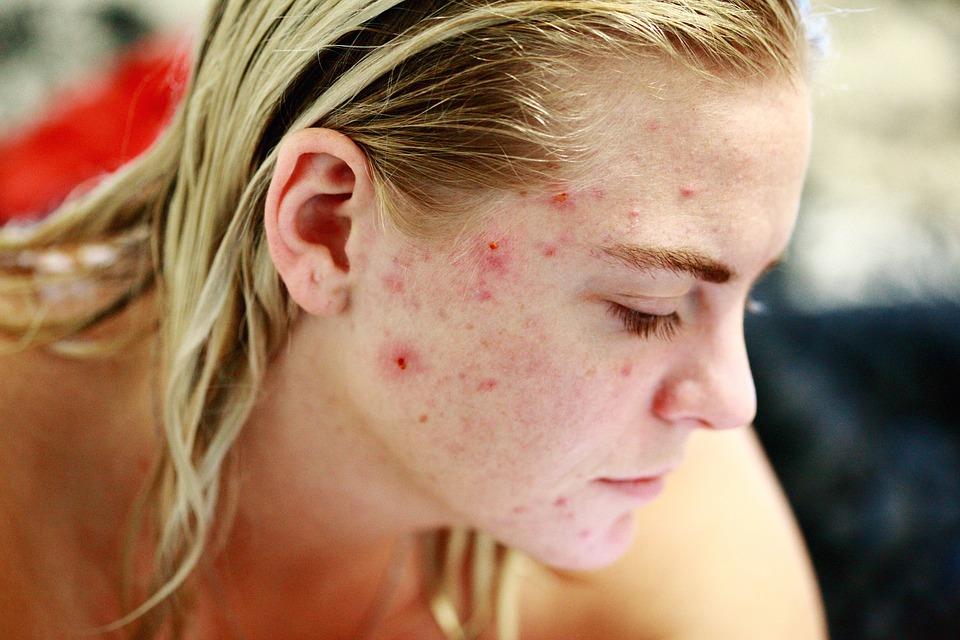Acne in action
Adipogenesis plays a key role during deep tissue infection with Staphylococcus aureus, but the contribution of this process in acne caused by Cutibacterium acnes is not well understood. O’Neill et al. demonstrate that adipogenesis in skin fibroblasts is critical to acne pathogenesis. In mice and humans, perifollicular dermal preadipocytes were a subset of fibroblasts that showed colocalization of the PREF1 adipogenesis marker with the antimicrobial peptide cathelicidin upon exposure to C. acnes in a TLR2-dependent manner. Retinoic acid treatment of wild-type mice promoted enhanced cathelicidin expression, inhibited adipogenesis, and suppressed acne-like lesion formation, and acne patients undergoing retinoid treatment also showed induction of cathelicidin. These data indicate that adipogenic fibroblasts are critical to acne pathogenesis.
Abstract
Innate immune defense against deep tissue infection by Staphylococcus aureus is orchestrated by fibroblasts that become antimicrobial when triggered to differentiate into adipocytes. However, the role of this process in noninfectious human diseases is unknown. To investigate the potential role of adipogenesis by dermal fibroblasts in acne, a disorder triggered by Cutibacterium acnes, single-cell RNA sequencing was performed on human acne lesions and mouse skin challenged by C. acnes. A transcriptome consistent with adipogenesis was observed within specific fibroblast subsets from human acne and mouse skin lesions infected with C. acnes. Perifollicular dermal preadipocytes in human acne and mouse skin lesions showed colocalization of PREF1, an early marker of adipogenesis, and cathelicidin (Camp), an antimicrobial peptide. This capacity of C. acnes to specifically trigger production of cathelicidin in preadipocytes was dependent on TLR2. Treatment of wild-type mice with retinoic acid (RA) suppressed the capacity of C. acnes to form acne-like lesions, inhibited adipogenesis, and enhanced cathelicidin expression in preadipocytes, but lesions were unresponsive in Camp−/− mice, despite the anti-adipogenic action of RA. Analysis of inflamed skin of acne patients after retinoid treatment also showed enhanced induction of cathelicidin, a previously unknown beneficial effect of retinoids in difficult-to-treat acne. Overall, these data provide evidence that adipogenic fibroblasts are a critical component of the pathogenesis of acne and represent a potential target for therapy.
INTRODUCTION
Acne vulgaris is an inflammatory disease of the pilosebaceous unit that ranks among the most common global skin disorders (1–4). Cutibacterium acnes is a common and abundant member of the skin microbiome that contributes to the inflammation associated with acne (1, 2, 4). To understand factors that drive inflammation in acne, numerous studies have examined host-pathogen interactions between C. acnes and local cell types, including keratinocytes, sebocytes, and leukocytes (1, 2, 4–7). However, the pathophysiology of acne remains poorly understood.The primary anatomical site for development of disease in acne is the specialized physical and immunological barrier of the epithelium within the hair follicle. Under healthy conditions, this epithelium consists of several keratinocyte layers that function as a physical barrier against microbial penetration while also promoting an immunotolerant state in response to constant exposure to microbes (6, 8). In hair follicles, dense C. acnes colonization within the less stratified and deeper region of pilosebaceous units presents a specific challenge for the skin. Healthy follicles tolerate the presence of C. acnes, but disease conditions in acne promote the capacity of C. acnes and its metabolic products to interact with perifollicular cells, stimulate inflammation, and promote the development of acne lesions.The responses of classical immune and epithelial cells have been evaluated extensively in inflammatory skin disorders such as acne, but the participation of dermal fibroblasts has been less well investigated. Recent observations characterizing the response to Staphylococcus aureus skin invasion found that fibroblasts can undergo localized proliferation and differentiation into a preadipocyte lineage, a process dubbed reactive adipogenesis (9–11). Reactive adipogenesis is characterized by elevated expression of preadipocyte factor 1 (PREF1/DLK1) during preadipocyte proliferation. This response provides host defense as it is accompanied by an acute and transient increase of the expression of the antimicrobial peptide cathelicidin (Camp) as well as other genes with immunologic functions (10, 12, 13). Cathelicidin expression during reactive adipogenesis limits bacterial growth because impairment of reactive adipogenesis or deletion of Camp from cultured fibroblasts results in increased S. aureus growth (9, 10, 12, 14). Furthermore, recent studies have shown that reactive adipogenesis takes place in the gut in response to injury, and suppression of this response led to increased penetration of microbial products into the bloodstream and alteration of disease severity (10, 12–15). Thus, current findings in the skin and the gut suggest that fibroblasts in the subepithelial stroma play an important but previously underappreciated immune defense function.In this study, we sought to better understand the role of fibroblasts in acne. We show that dermal fibroblasts in human acne lesions display a response consistent with reactive adipogenesis. This process could be modeled in mice in which the development of skin lesions by C. acnes was dependent on dermal adipogenesis and modified by retinoid treatment. These data show that dermal perifollicular fibroblasts are a previously unknown part of the pathogenesis of acne….







